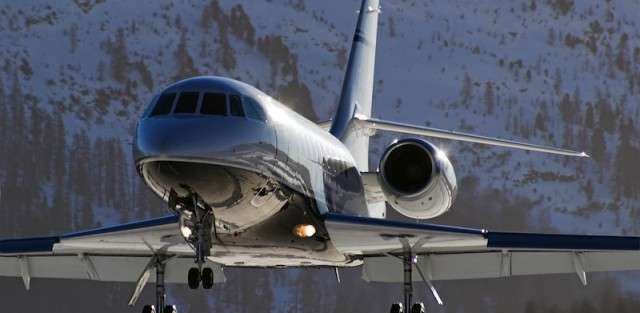Altitude

Altitude is the vertical distance between an object and mean sea level. In aviation, this term is also used to refer to the cruising altitude of a charter aircraft. Altitude is an important measurement, as it affects the safety, performance and cabin comfort of an aircraft. To determine altitude, aircraft are outfitted with a range of equipment, including:
- GPS (Global Positioning System)
- Aneroid barometers
- Radar altimeters
Types of Altitude Measurement
It should be noted that altitude is measured in different ways. For instance, the distance between a charter aircraft and mean sea level (true altitude) will be different than the distance between that same aircraft flying over a mountain range (absolute altitude). Furthermore, there is a third type of altitude measurement, known as indicated altitude. Pilots determine this using an altimeter in the cockpit of a charter aircraft. It measures the surrounding air pressure around the aircraft’s exterior to determine altitude. All aircraft have a maximum cruising altitude, also known as a service ceiling. In order to become certified by the Federal Aviation Administration, or other regulating body, manufacturers must submit their aircraft for testing to determine these thresholds. Altitude is also used to determine minimum vertical separation levels between aircraft flying in the same vicinity. Air traffic controllers will instruct pilots to maintain a certain altitude, or flight level, in order to avoid collision.
Altitude is the vertical distance between an object and mean sea level. In aviation, this term is also used to refer to the cruising altitude of a charter aircraft. Altitude is an important measurement, as it affects the safety, performance and cabin comfort of an aircraft. To determine altitude, aircraft are outfitted with a range of equipment, including:
- GPS (Global Positioning System)
- Aneroid barometers
- Radar altimeters
Types of Altitude Measurement
It should be noted that altitude is measured in different ways. For instance, the distance between a charter aircraft and mean sea level (true altitude) will be different than the distance between that same aircraft flying over a mountain range (absolute altitude). Furthermore, there is a third type of altitude measurement, known as indicated altitude. Pilots determine this using an altimeter in the cockpit of a charter aircraft. It measures the surrounding air pressure around the aircraft’s exterior to determine altitude. All aircraft have a maximum cruising altitude, also known as a service ceiling. In order to become certified by the Federal Aviation Administration, or other regulating body, manufacturers must submit their aircraft for testing to determine these thresholds. Altitude is also used to determine minimum vertical separation levels between aircraft flying in the same vicinity. Air traffic controllers will instruct pilots to maintain a certain altitude, or flight level, in order to avoid collision.








